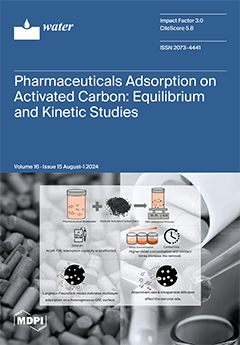Salt damage affects crop yields and wastes limited water resources. Implementing water-saving and salt-controlling strategies along with amendments can enhance crop productivity and support the development of salinized soils towards. In this study, we used “Jia Liang 0987” maize as the test material,
[...] Read more.
Salt damage affects crop yields and wastes limited water resources. Implementing water-saving and salt-controlling strategies along with amendments can enhance crop productivity and support the development of salinized soils towards. In this study, we used “Jia Liang 0987” maize as the test material, and a two-factor split block design was executed to investigate the effects of synergistic management of irrigation volume (W1: 360 mm, W2: 450 mm, and W3: 540 mm) and amendments (T1: microbial agent 816.33 kg·hm
−2, T2: humic acid 6122.45 kg·hm
−2, T3: microsilica powder 612.25 kg·hm
−2) on water, salt and soil indices, and growth characteristics. The combination of 450 mm of irrigation with humic acid (W2T2) or with microsilica powder (W2T3) significantly lowered the groundwater level by 0.24 m and 0.19 m, respectively. The soil mineralization was significantly reduced by 2.60 g/L and 1.75 g/L with W2T2 and 540 mm of irrigation combined with humic acid (W3T2), respectively. The soil moisture content increased with depth and over time, showing the greatest improvement with W2T2. This combination also showed optimal results for pH and total salt, organic matter, available phosphorus, quick-acting potassium, Cl
−, and SO
42− contents. W2T2 and W3T2 improved soil field capacity and HCO
3− contents, and significantly increased total nitrogen and phosphorus content, improving the soil nutrient grade. W2T2 showed the greatest maize plant height (323.67 cm) and stem thickness (21.54 mm for diameter), enhancing above-ground dry biomass (72,985.49 kg·hm
−2) and grain yield (14,646.57 kg·hm
−2). Implementing water-saving and salt-controlling strategies with amendments effectively improved soil fertility and crop yield in salinized soils, and the amendments factor played a major role. In saline–alkali soils in the northwest of China, 450 mm of irrigation combined with humic acid is especially helpful for enhancing soil fertility and maize productivity.
Full article





